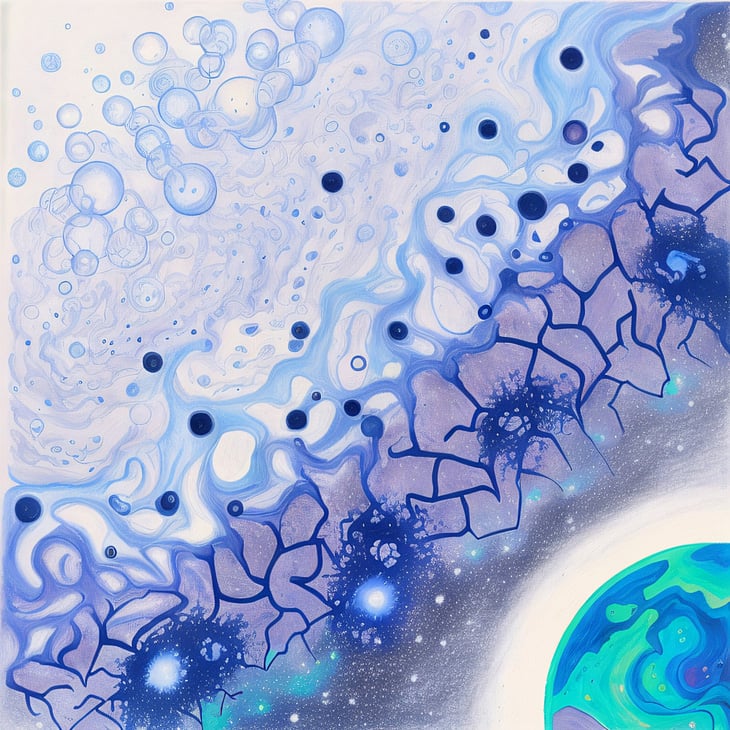Research led by a young Vietnamese scientist at the University of Michigan (USA) has discovered evidence that large structures and connections between galaxies in the universe develop more slowly than predicted by Einstein's General Theory of Relativity.

Dr. Nguyen Nhat Minh - Photo: NVCC
Learn more about gravity and dark energy
Researchers at the University of Michigan have also shown that as dark energy (a type of energy whose nature is unknown but is prevalent in the universe) accelerates the expansion of the universe, the discrepancy between theory and data becomes increasingly evident. The lead author of the work is Nguyen Nhat Minh - a young Vietnamese cosmologist, a former student of the theoretical physics department at the University of Natural Sciences in Ho Chi Minh City. The discovery was published in Physical Review Letters, a journal ranked first by Google Scholar in mathematics and physics. Because of the importance of the discovery, the research was evaluated as an outstanding work by the editorial office of the American Physical Society and was reported by many international physics journals. Galaxies are connected to each other everywhere in the universe like a giant spider web. Their distribution in space is not random but tends to cluster together. In fact, the entire web of matter in the universe started from tiny clumps of matter in the early universe, gradually growing into individual galaxies and eventually forming clusters and filaments of galaxies. The universe is not only made up of matter. It most likely also contains a mysterious component called dark energy. Dark energy accelerates the expansion of the entire universe. When dark energy accelerates the expansion of the universe, it has the opposite effect on large structures. Dr. Nhat Minh analyzed: "If gravity acts like an amplifier that enhances the disturbances of matter that promote them to grow into large structures, then dark energy acts like an attenuator that weakens the disturbances and hinders the growth of these structures." Therefore, according to him, "by understanding how structures in the universe have assembled and grown, we can understand more about the nature of gravity and dark energy."
Matter in the early universe gradually combined into large cosmic structures in the late period - Illustration: NHAT MINH - MAI THANH
Continue studying the motion of galaxies
Dr. Nhat Minh and his colleagues, Professor Dragan Huterer and Dr. Yuewei Wen (both from the University of Michigan) conducted a study on the time-based evolution of large structures throughout the evolution of the universe using multiple sources of space exploration data. According to Michigan News, they first used the cosmic microwave background (or CMB), which consists of photons emitted shortly after the Big Bang that created the universe. These photons provide a snapshot of the early universe. When the photons reach our telescopes, their paths can be bent by the gravity of large structures along their paths. By studying this phenomenon, the researchers can deduce the structure and matter distribution in the universe. Cosmologists have taken advantage of the phenomenon of "light from distant background galaxies being distorted by the gravitational interaction with matter between them and telescopes," deciphering the distortions to determine how matter is distributed between us and the distant background galaxies. "The important thing is that the cosmic microwave background and the background galaxies are located at different distances from our telescopes, so the weak gravitational lensing of the galaxies gives us information about the distribution of matter in the universe at a time closer to us than the information about the distribution of matter inferred from the weak gravitational lensing of the cosmic microwave background," Minh explained to the Michigan News. To track the development of structure at even later times, cosmologists continue to study the motion of galaxies in the nearby universe. When galaxies fall within the gravitational influence of cosmic structures, their motion provides information directly connected to the development of that structure.New research results explain the "S8 Contradiction"?
The researchers' new discovery could resolve the so-called "S8 Confusion" in cosmology. S8 is a parameter that describes the growth of structure in the universe. The disagreement arose when scientists used two different methods to determine the value of S8, and the values obtained by the two methods did not agree. The first method, which used photons from the cosmic microwave background, showed a higher S8 value than the value inferred from measurements of weak gravitational lensing (which stretches and warps the observed shapes of galaxies) and galaxies collapsing. Neither method measures the growth of structure at the present time. Instead, they study structure at earlier times and then extrapolate to the present day, assuming the standard model is the correct model of the universe. The structure obtained from the cosmic microwave background is close to the early universe, while the structure obtained from gravitational lensing and galaxy clustering is in the later universe, closer to the present time. According to Dr. Nhat Minh, the researchers' findings on the suppression of growth of matter and structure in the late universe will make the two S8 values from the two measurements completely consistent with each other.Tuoitre.vn



![[Photo] Prime Minister Pham Minh Chinh receives delegation from the US-China Economic and Security Review Commission of the US Congress](https://vphoto.vietnam.vn/thumb/1200x675/vietnam/resource/IMAGE/2025/5/7/ff6eff0ccbbd4b1796724cb05110feb0)


























































![[Photo] Prime Minister Pham Minh Chinh talks on the phone with Singaporean Prime Minister Lawrence Wong](https://vphoto.vietnam.vn/thumb/402x226/vietnam/resource/IMAGE/2025/5/8/e2eab082d9bc4fc4a360b28fa0ab94de)































Comment (0)